Search Result
Results for "
DU145
" in MedChemExpress (MCE) Product Catalog:
| Cat. No. |
Product Name |
Target |
Research Areas |
Chemical Structure |
-
- HY-145312
-
|
|
ATM/ATR
|
Cancer
|
|
ATR-IN-4 is a potent ATR (Ataxia telangiectasia mutated gene Rad 3-associated kinase) inhibitor. ATR-IN-4 inhibits growth of human prostate cancer cells DU145 and human lung cancer cells NCI-H460 with IC50s of 130.9 nM and 41 .33 nM, respectively. (Patent CN112142744A, compound 13) .
|
-

-
- HY-12842
-
|
|
IAP
Apoptosis
|
Cancer
|
|
UC-112 is a novel potent IAP(Inhibitor of apoptosis) inhibitor; potently inhibit cell growth in two human melanoma (A375 and M14) and two human prostate (PC-3 and DU145) cancer cell lines(IC50=0.7-3.4 uM).
|
-
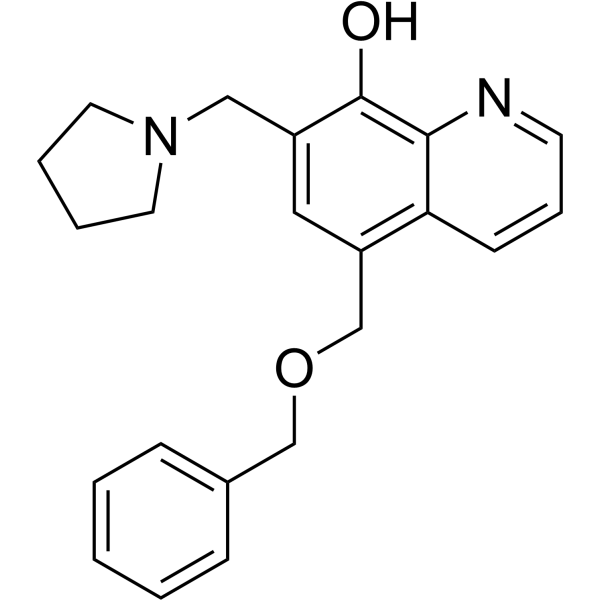
-
- HY-N1252
-
|
|
Others
|
Cancer
|
|
Scillascillin (compound 10) is a homoisoflavanone. Scillascillin can be isolated from S. scilloides. Scillascillin shows anticancer activity towards MCF-7 (breast cancer) and DU-145 (prostate cancer) cells with the IC50 of 9.59 and 11.32 ug/ml, respectively .
|
-
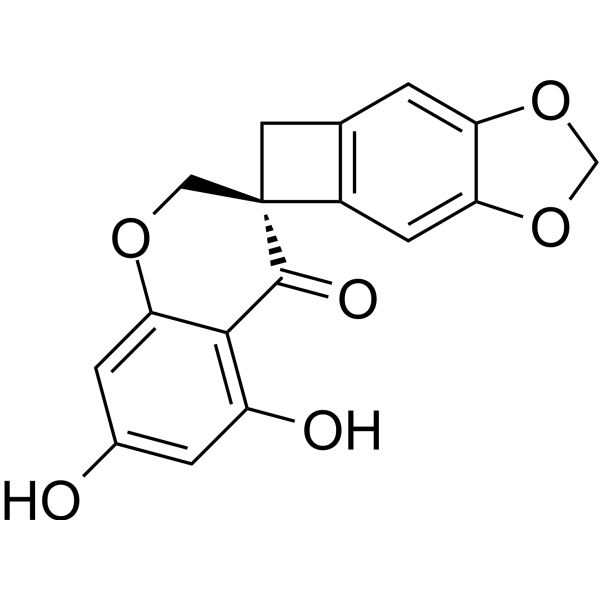
-
- HY-147734
-
|
|
Others
|
Cancer
|
|
Calpain inhibitors are lipophilic and show moderate to good antiproliferative activity in vitro compared with melanoma cell lines (a-375 and b-16f1) and PC-3 prostate cancer cells. In addition, a member of this group (compound 3) expressed 2 μ M concentration inhibited the invasion of DU-145 cells by 80%.
|
-
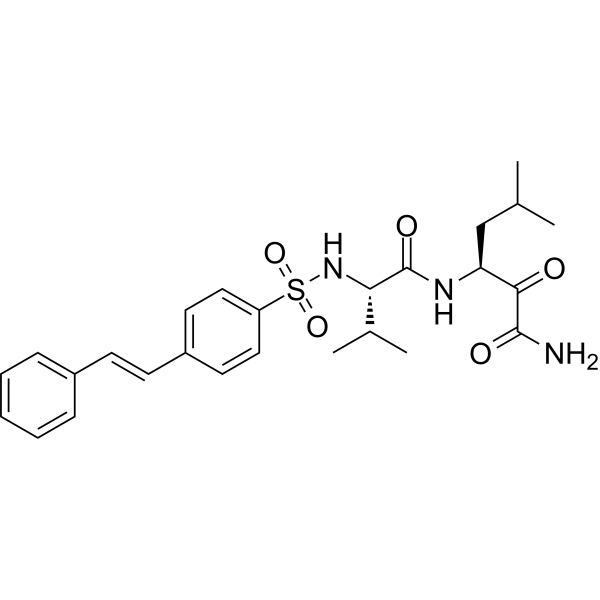
-
- HY-N8270
-
|
|
Hedgehog
Endogenous Metabolite
|
Cancer
|
|
Physalin H is a natural product that can be isolated from Solanum nigrum. Physalin H is an inhibitor of Hedgehog (Hh) signaling and it disrupts GLI1-DNA-complex formation. Physalin H inhibits GLI1 transcription with an IC50 value of 0.7 μM. Physalin H shows cytotoxicity to PANC1 and DU145 cells with IC50 values of 5.7 and 6.8 μM, respectively .
|
-
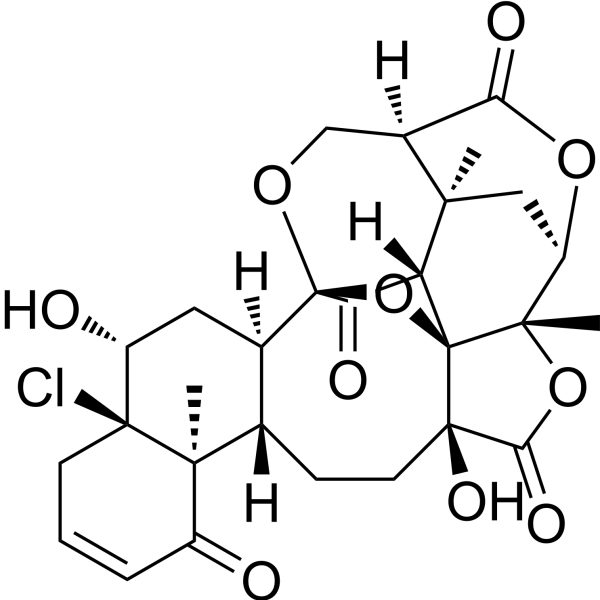
-
- HY-155982
-
|
|
STAT
|
Cancer
|
|
STAT3-IN-20 (Compound 40) is a selective STAT3 inhibitor (IC50: 0.65 μM). STAT3-IN-20 binds the SH2 domain to inhibit STAT3 phosphorylation, translocation, and downstream gene transcription. STAT3-IN-20 exhibits antiproliferative activities against STAT3-overactivated DU145 and MDA-MB-231 cancer cells (IC50: 2.97 μM and 3.26 μM respectively). STAT3-IN-20 induces cell cycle arrest and apoptosis .
|
-
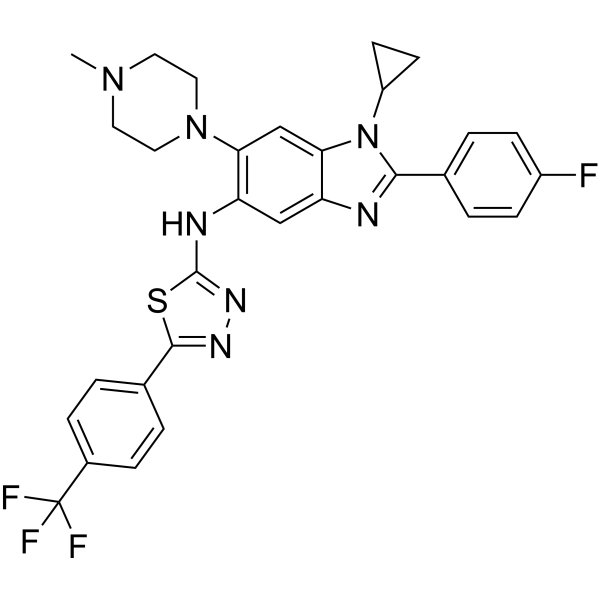
-
- HY-119257
-
|
|
Farnesyl Transferase
Apoptosis
|
Cancer
|
|
ABT-100 is a potent, highly selective and orally active farnesyltransferase inhibitor. ABT-100 inhibits cell proliferation (IC50s of 2.2 nM, 3.8 nM, 5.9 nM, 6.9 nM, 9.2 nM, 70 nM and 818 nM for EJ-1, DLD-1, MDA-MB-231, HCT-116, MiaPaCa-2, PC-3, and DU-145 cells, respectively), increases apoptosis and decreases angiogenesis. ABT-100 possesses broad-spectrum antitumor activity .
|
-
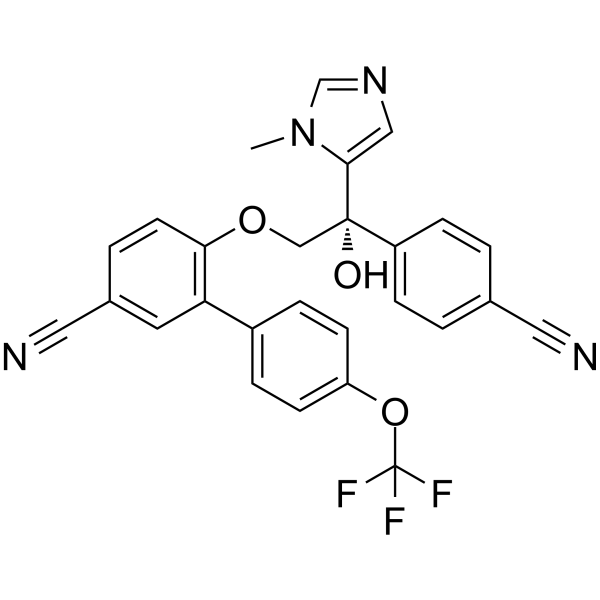
-
- HY-N10778
-
|
|
Others
|
Others
|
|
(19R,23E)-5b,19-Epoxy19-ethoxycucurbita-6,23-diene-3b,25-diol is a cucurbitane-type triterpenoid. (19R,23E)-5b,19-Epoxy19-ethoxycucurbita-6,23-diene-3b,25-diol has been tested to no effect against 5 cancer cell lines, MCF-7, HepG2, Du145, Colon205 and HL-60 by MTT assay .
|
-
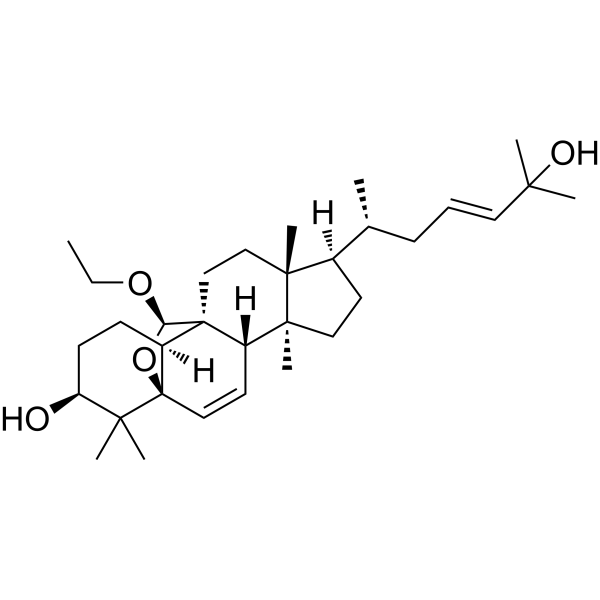
-
- HY-103711
-
|
|
Microtubule/Tubulin
|
Cancer
|
|
Estramustine is an antineoplastic agent. Estramustine depolymerizes microtnbules by binding to tubulin 1, exhibits antimitotic activity with an IC50 value of ~16 μM for mitosis of DU 145 cells. Estramustine blocks cells at mitosis in prostate tumor xenografts .
|
-
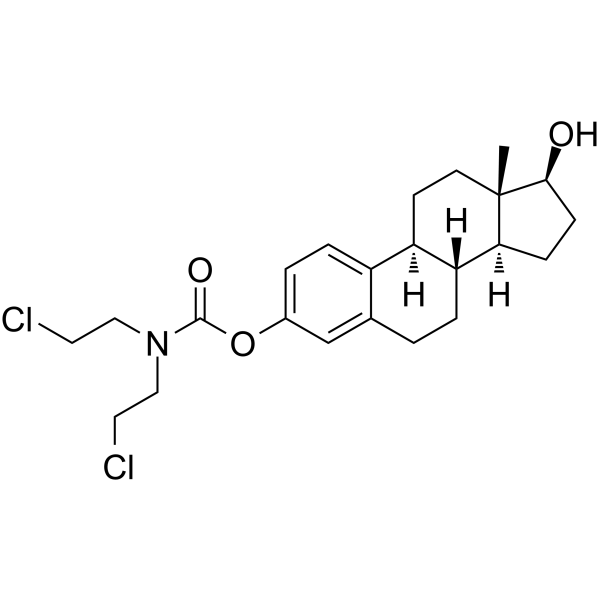
-
- HY-119694
-
|
|
Others
|
Cancer
|
|
Rotenolone is an antiproliferative agent. Rotenolone shows antiproliferative activity against the ovarian cancer A2780, breast cancer BT-549, prostate cancer DU 145, NSCLC NCI-H460, and colon cancer HCC-2998 cell lines, with IC50s of 0.95, 1.6, 2.7, 2.0, and 2.9 μM, respectively .
|
-
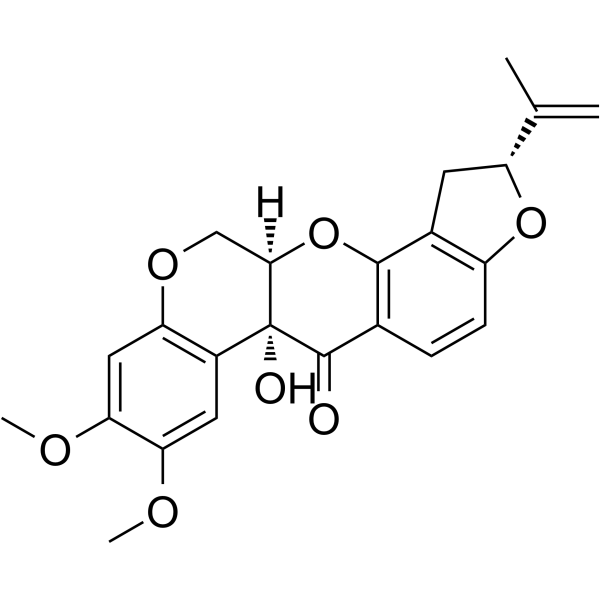
-
- HY-144667
-
|
|
Aldehyde Dehydrogenase (ALDH)
|
Cancer
|
|
ALDH1A3-IN-1 (Compound 14) is a potent ALDH1A3 inhibitor, with an IC50 of 0.63 µM and a Ki of 0.46 µM. ALDH1A3-IN-1 can be studied in prostate cancer .
|
-
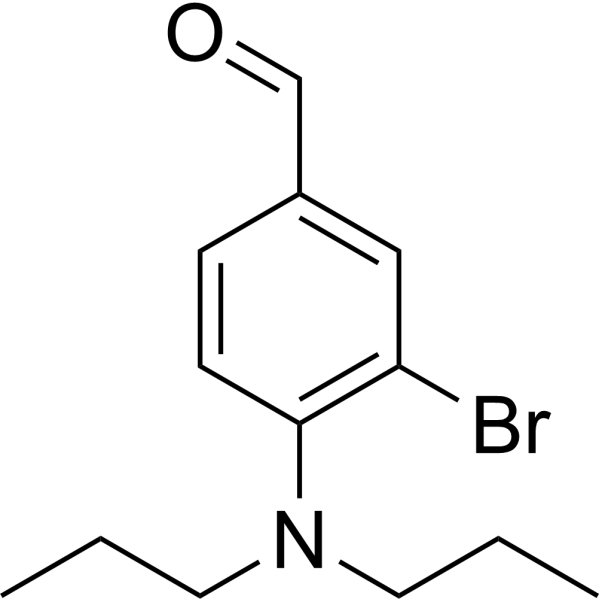
-
- HY-N2415
-
|
|
Microtubule/Tubulin
|
Cancer
|
|
Podophyllotoxone is isolated from the roots of Dysosma versipellis and has anti-cancer activities.Podophyllotoxone is able to inhibit the tubulin polymerization .
|
-
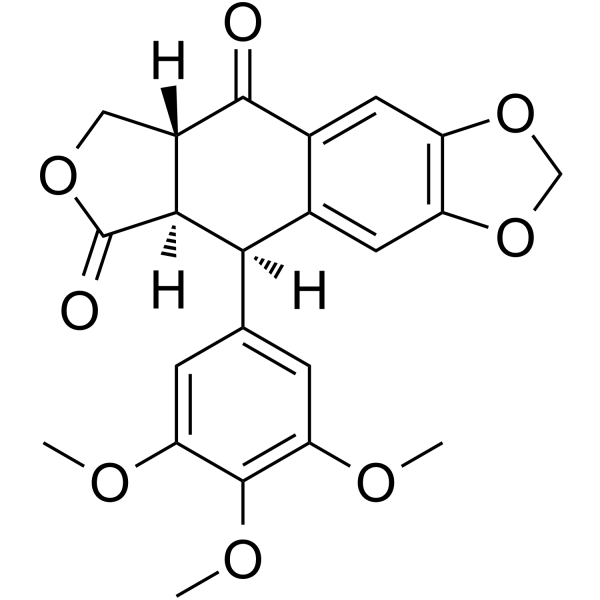
-
- HY-133219
-
|
|
Topoisomerase
|
Cancer
|
|
Guajadial C is a Top1 catalytic inhibitor that delays Top1 poison-mediated DNA damage. Guajadial C shows cytotoxicity against cancer cells .
|
-

-
- HY-123524
-
|
|
STAT
|
Cancer
|
|
STAT3-IN-4 (compound B9) is a STAT3 inhibitor with Kd values for STAT3 (I634S/Q635G) and WT are 22.75 and 4.59 μM, respectively. STAT3-IN-4 can inhibit the proliferation of tumor cells .
|
-
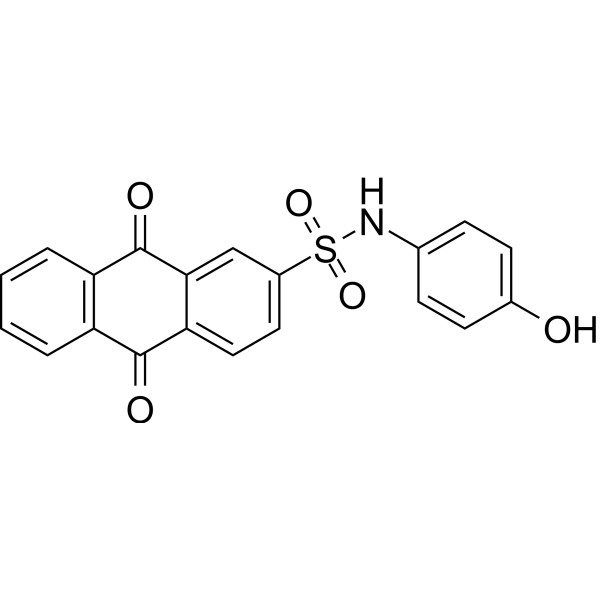
-
- HY-146027
-
|
|
Androgen Receptor
|
Cancer
|
|
Androgen receptor antagonist 4 (Compound AT2) is an androgen receptor (AR) antagonist with an IC50 of 0.15 μM. Androgen receptor antagonist 4 efficiently antagonizes AR transcriptional activity, suppresses downstream target gene of AR, and blocks the DHT-induced AR nuclear translocation. Androgen receptor antagonist 4 shows anticancer activities .
|
-
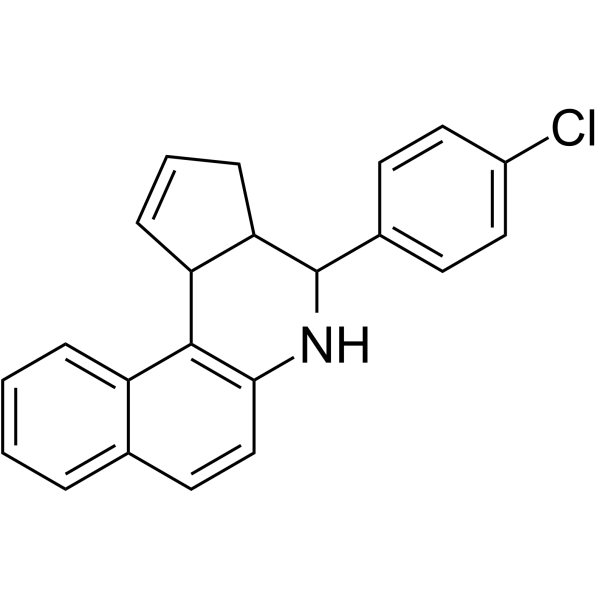
-
- HY-146026
-
|
|
Androgen Receptor
|
Cancer
|
|
Androgen receptor antagonist 3 (Compound C18) is an androgen receptor (AR) antagonist with an IC50 of 2.4 μM. Androgen receptor antagonist 3 shows anticancer activities .
|
-
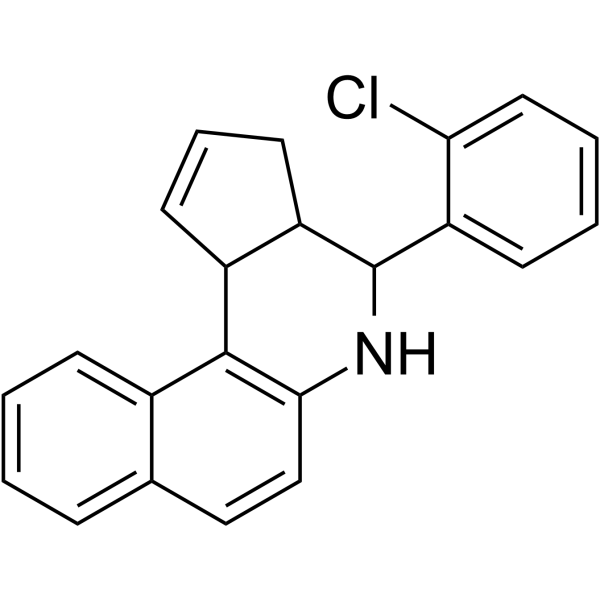
-
- HY-128172
-
|
NBA
|
TRP Channel
|
Cancer
|
|
TRPM4-IN-2 (NBA) is a potent transient receptor potential melastatin 4 (TRPM4) inhibitor with an IC50 value of 0.16 μM. TRPM4-IN-2 can be used for researching prostate cancer and colorectal cancer .
|
-
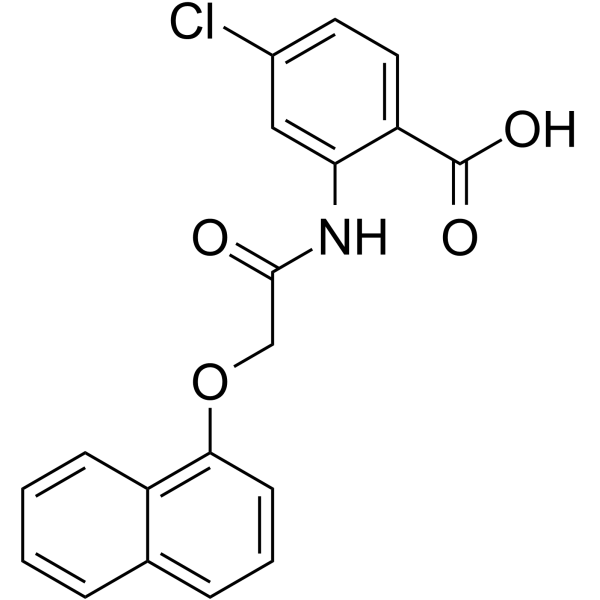
-
- HY-N10491
-
|
|
P-glycoprotein
|
Cancer
|
|
Spongionellol A is a MDR1 (p-glycoprotein) inhibitor. Spongionellol A has high cytotoxic activity and selectivity in prostate cancer cells by inducing caspase‑dependent apoptosis. Spongionellol A can be used in the research of cancers, such as prostate cancer .
|
-

-
- HY-N10492
-
|
|
P-glycoprotein
|
Cancer
|
|
Spongionellol A analog 1, an analog of Spongionellol A (HY-10491), is a MDR1 (p-glycoprotein) inhibitor. Spongionellol A analog 1 has high cytotoxic activity and selectivity in prostate cancer cells by inducing caspase‑dependent apoptosis. Spongionellol A analog 1 can be used in the research of cancers, such as prostate cancer .
|
-
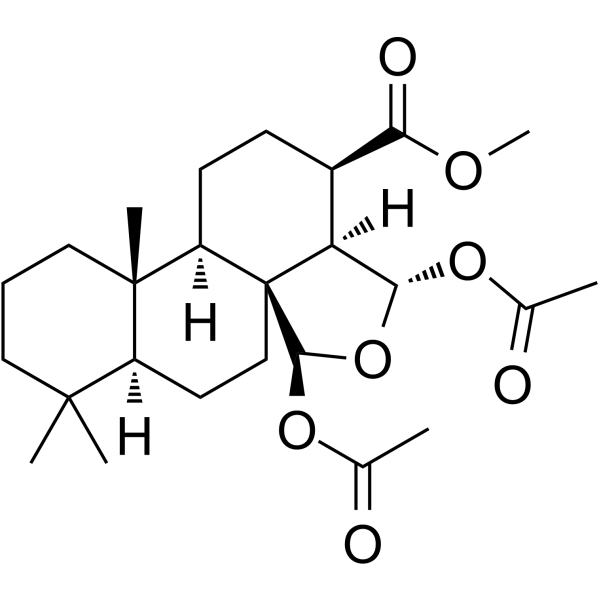
-
- HY-16375
-
|
D-63153
|
GnRH Receptor
Apoptosis
|
Cancer
|
|
Ozarelix (D-63153) is a GnRH antagonist. Ozarelix induces cell apoptosis and arrests cell in G2/M phase. Ozarelix can be used in the research of prostate cancer .
|
-

-
- HY-122943
-
|
|
Fungal
Apoptosis
|
Infection
Cancer
|
|
Moracin D is a flavonoid that can be isolated from Morus alba. Moracin D induces cell apoptosis and shows hypoglycemic, antiadipogenic, antifungal and antitumor effects. Moracin D can be used for fungal infection and breast cancer research .
|
-
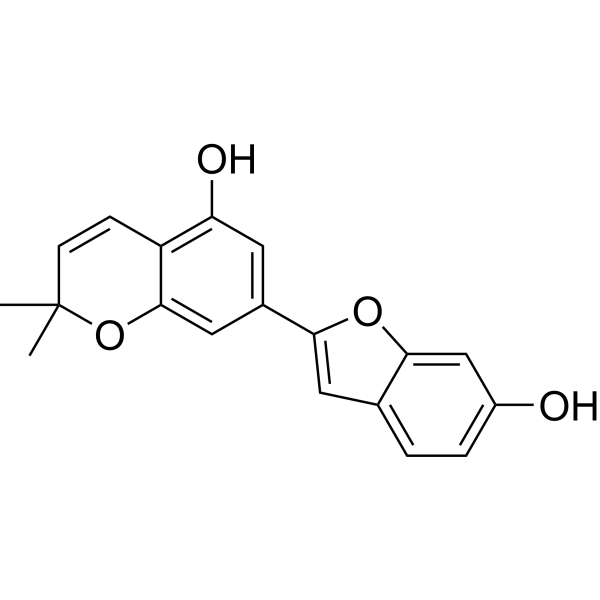
-
- HY-162370
-
|
|
Cytochrome P450
|
Infection
Cancer
|
|
CYP51-IN-16 (compound C6) is a phenylpyrimidine CYP51 inhibitor, and shows antifungal activity in in vitro. CYP51-IN-16 inhibits tumor cell growth .
|
-
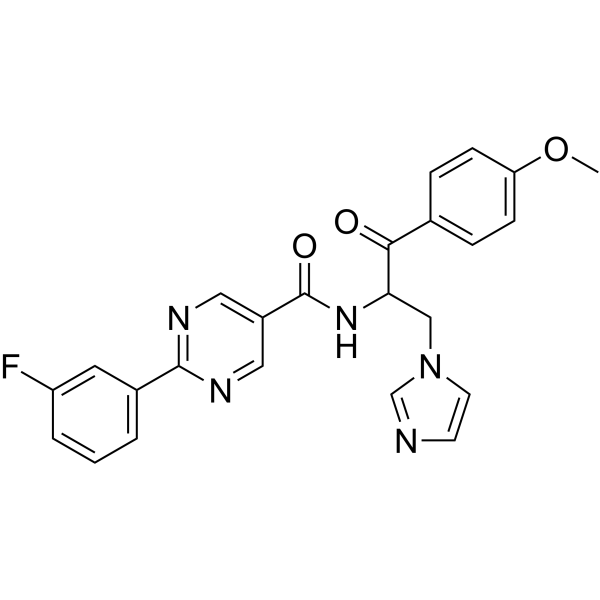
-
- HY-B2163
-
Astaxanthin
Maximum Cited Publications
6 Publications Verification
|
PPAR
Reactive Oxygen Species
STAT
NF-κB
Apoptosis
|
Cardiovascular Disease
Metabolic Disease
Cancer
|
|
Astaxanthin, the red dietary carotenoid, is an orally effective and potent antioxidant. Astaxanthin inhibits NF-κB and down-regulates VEGF in blood glucose. Astaxanthin exerts anti-cancer cell proliferation, increases apoptosis, impairs migration and invasion by activating PPARγ and reducing the expression of STAT3. Astaxanthin also has neuroprotective and anti-inflammatory activity and can be used in studies of cancer, diabetic retinopathy, cardiovascular disease, and in the coloring of animal feed .
|
-

-
- HY-150591
-
|
|
Proteasome
|
Cancer
|
|
20S Proteasome-IN-3 is a 20S proteasome β5 subunit inhibitor (IC50=1.64 μM) . 20S Proteasome-IN-3 shows anti-tumor proliferation activity .
|
-
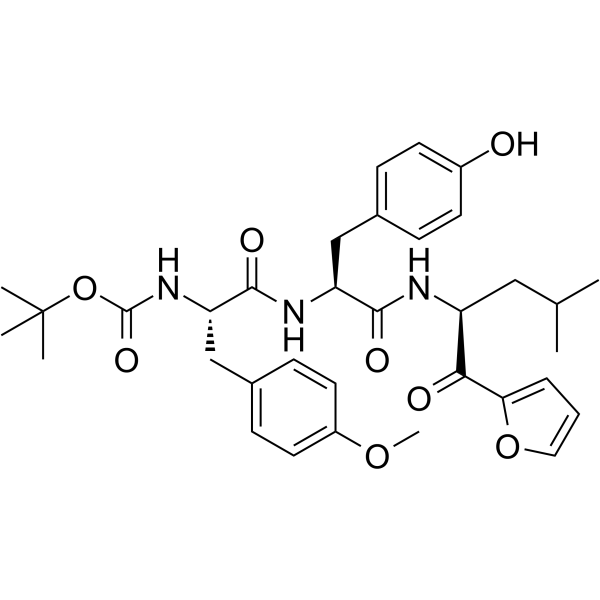
-
- HY-P99183
-
|
EMD 525797; DI17E6
|
Integrin
|
Cancer
|
|
Abituzumab (DI17E6) is a humanised anti-integrin αV monoclonal antibody (IgG2 type). Abituzumab effectively reduces the phosphorylation of FAK, Akt and ERK. Abituzumab can be used in cancer research, particularly in prostate cancer .
|
-

-
- HY-113574
-
|
|
HSP
|
Cancer
|
|
HSP90-IN-29 (Compound 13), a benzoxazole derivative, is a potent and selective HSP-90 inhibitor with an IC50 value of 30 nM. HSP90-IN-29 has antitumor activity .
|
-
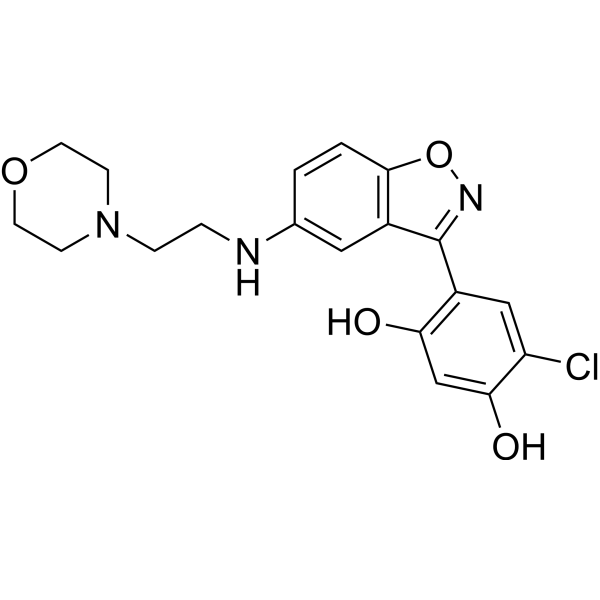
-
- HY-114657A
-
|
|
Arp2/3 Complex
|
Inflammation/Immunology
Cancer
|
|
Benproperine phosphate is an orally active, potent actin-related protein 2/3 complex subunit 2 (ARPC2) inhibitor. Benproperine phosphate attenuates the actin polymerization rate of action polymerization nucleation by impairing Arp2/3 function. Benproperine phosphate has the potential for a cough suppressant and suppresses cancer cell migration and tumor metastasis .
|
-
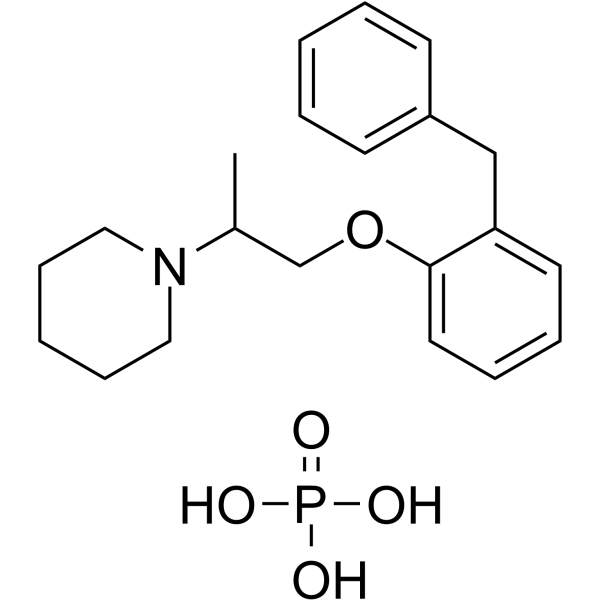
-
- HY-16187
-
|
|
HIF/HIF Prolyl-Hydroxylase
Apoptosis
|
Cancer
|
|
EL-102 is a hypoxia-induced factor 1 (Hif1α) inhibitor. EL-102 induces apoptosis, inhibits tubulin polymerisation and shows activities against prostate cancer. EL-102 can be used for the research of cancer .
|
-
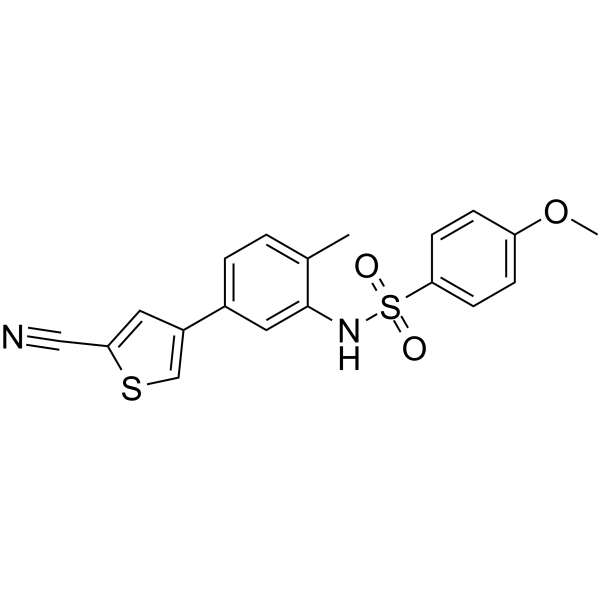
-
- HY-18981
-
|
(+)-Decursin
|
PKC
Apoptosis
CXCR
|
Neurological Disease
Inflammation/Immunology
Cancer
|
|
Decursin ((+)-Decursin) is a potent anti-tumor agent. Decursin also is a cytotoxic agent and a potent protein kinase C activator. Decursin induces apoptosis and cell cycle arrest at G1 phase. Decursin decreases the expression of CDK2, CDK4, CDK6, cyclin D1 protein at 48 h. Decursin inhibits cell proliferation and migration. Decursin shows anti-tumor, anti-inflammatory and analgesic activities .
|
-

-
- HY-157388
-
|
|
Histone Methyltransferase
HDAC
|
Cancer
|
|
CARM1/HDAC2-IN-1 (compound CH-1) is a dual inhibitor against CARM1 and HDAC2, with IC50 values of 3.71 nM and 4.07 nM, respectively. CARM1/HDAC2-IN-1 possesses antitumor activity .
|
-

-
- HY-161385
-
|
|
Topoisomerase
|
Cancer
|
|
Topoisomerase I inhibitor 21 (Compound 3e) is an inhibitor for Topoisomerase I through stabilization of enzyme-DNA complex. Topoisomerase I inhibitor 21 exhibits antiproliferative activity in 39 human cancer cells (JFCR39) with mean GI50 39 nM .
|
-
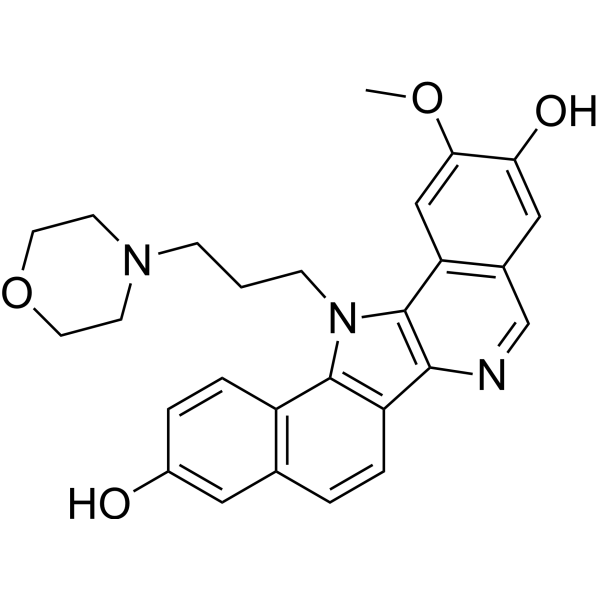
-
- HY-19960
-
BCTC
2 Publications Verification
|
TRP Channel
Insulin Receptor
CGRP Receptor
|
Neurological Disease
Metabolic Disease
Cancer
|
|
BCTC is an orally active current inhibitor of vanilloid receptor type 1 (VR1). BCTC is a transient receptor potential cation channel subfamily M member 8 (TRPM8) and transient receptor potential vanilloid 1 (TRPV1) antagonist. BCTC is an insulin sensitizer and secretor. BCTC has anticancer and analgesic effects .
|
-

-
- HY-N2959
-
|
|
JAK
STAT
Apoptosis
Autophagy
|
Cancer
|
|
Brevilin A is an orally active STAT3/JAK inhibitor (STAT3 IC50= 10.6 µM). Brevilin A shows anti-tumor activity, anti-proliferative activity to cancer cells, and can induce apoptosis and autophagy .
|
-

-
- HY-108986
-
|
|
Sirtuin
SARS-CoV
|
Cancer
|
|
JFD00244 is a sirtuin 2 (SIRT2) inhibitor, with anti-tumor effect. JFD00244 is also a Nsp-16 inhibitor against SARS-CoV-2 .
|
-
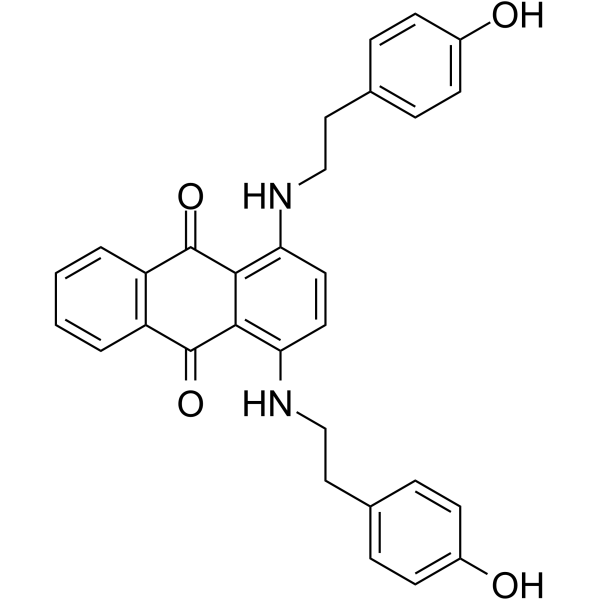
-
- HY-19527
-
|
N6-Benzyladenosine-5'-phosphate
|
STAT
Apoptosis
|
Cancer
|
|
IST5-002, a potent Stat5a/b inhibitor, selectively inhibits transcriptional activity of Stat5a/b (IC50s: 1.5 μM for Stat5a, 3.5 μM for Stat5b). IST5-002 inducs cell apoptotic and death of prostate cancer cells and chronic myeloid leukemia (CML) cells. IST5-002 can be used in the research of prostate cancer and chronic myeloid leukemia (CML) .
|
-
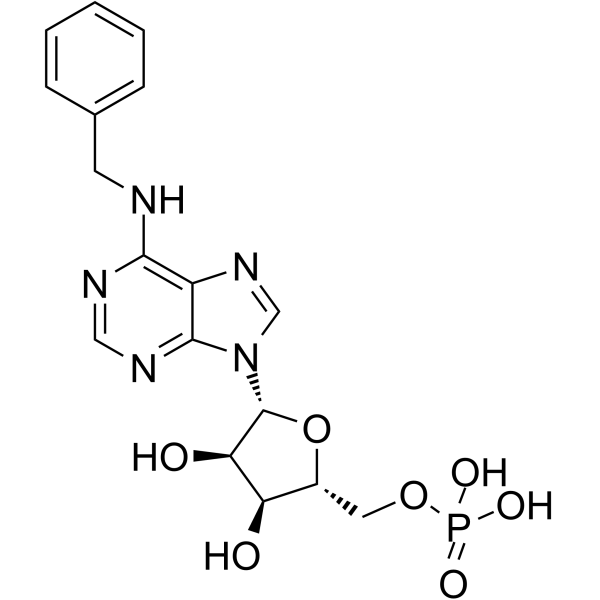
-
- HY-15792
-
|
10,11-(Methylenedioxy)-20(R)-camptothecin
|
Others
|
Cancer
|
|
(R)-FL118 (10,11-(Methylenedioxy)-20(R)-camptothecin) is the R-enantiomer of FL118 (HY-12486). (R)-FL118 shows anticancer activity .
|
-

-
- HY-116107
-
|
|
Necroptosis
|
Cancer
|
|
AG311 is an anticancer and antimetastatic agent. AG311 induces rapid necrosis in numerous cancer cell lines .
|
-
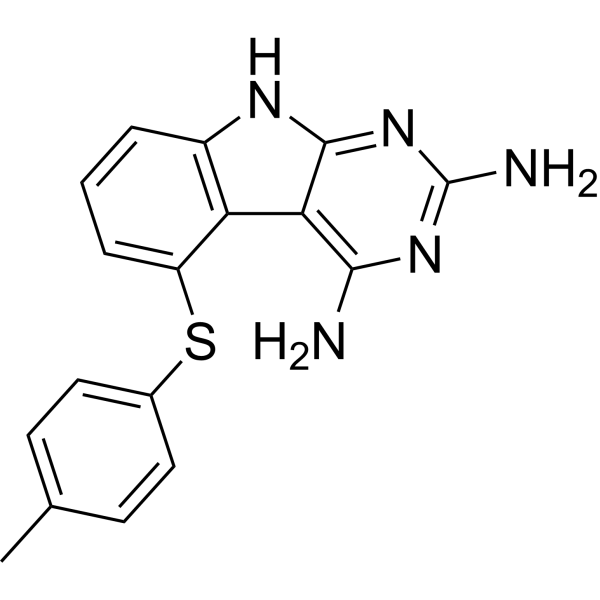
-
- HY-146393
-
|
|
PROTACs
Cytochrome P450
|
Cancer
|
|
PROTAC CYP1B1 degrader-1 (Compound 6C), a α-naphthoflavone chimera derivative, is able to eliminate cytochrome P450 (CYP)1B1-mediated agent resistance via targeted CYP1B1 degradation, with IC50s of 95.1 and 9838.6 nM for CYP1B1 and CYP1A2, respectively. PROTAC CYP1B1 degrader-1 can be used for the research of CYP1B1-overexpressing prostate cancer .
|
-

-
- HY-119833
-
|
|
MicroRNA
|
Cancer
|
|
Rubone, a chalcone analog, is a modulator of miR-34a. Rubone upregulates miR-34a expression in a p53 dependent manner, downregulates the downstream target Bcl-2 and Cyclin D1 expression, and suppresses hepatocellular carcinoma (HCC) growth in vivo. Rubone enhances the anticancer effect of Paclitaxel (PTX; HY-B0015) in PTX-resistant prostate cancer cell lines by reversing the expression of miR-34a downstream targets .
|
-
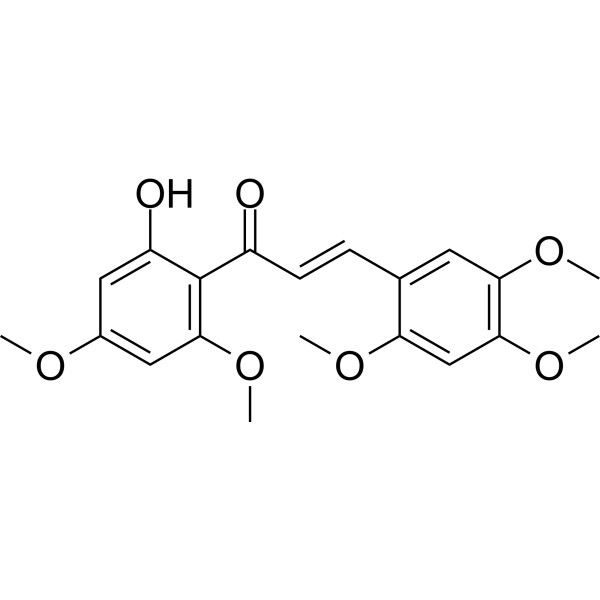
-
- HY-14454
-
TPh A
1 Publications Verification
Triphenyl Compound A
|
Others
|
Cancer
|
|
TPh A (Triphenyl Compound A) is a potent inhibitor of the nuclear protein pirin and binds specifically to pirin with a Ki of 0.6 uM. TPh A disrupts the formation of the bcl3–pirin complex. TPh A can be used as a novel small molecule tool to regulate pirin in cells .
|
-
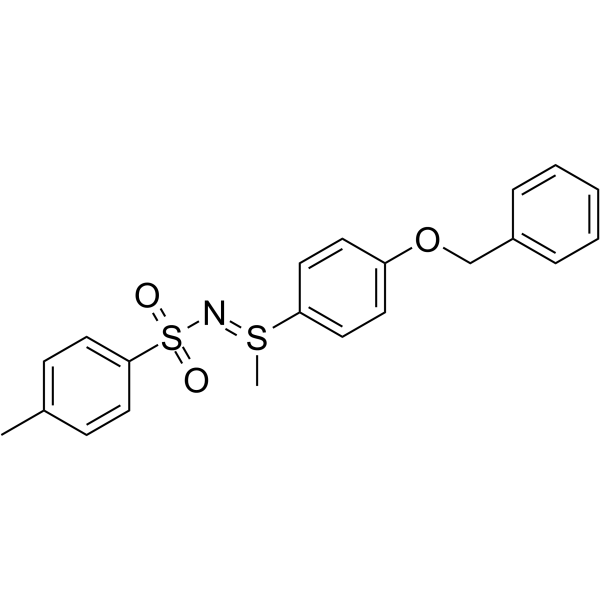
-
- HY-163340
-
|
|
Glucocorticoid Receptor
Androgen Receptor
|
Cancer
|
|
GA32 (compound 58r) is potent androgen receptor (AR)/glucocorticoid receptor (GR) dual inhibitor with IC50 values of 0.13 μM and 0.83 μM for AR and GR, respectively. GA32 inhibits the proliferation of Enzalutamide (HY-70002) resistance castration-resistant prostate cancer both in vitro and in vivo .
|
-
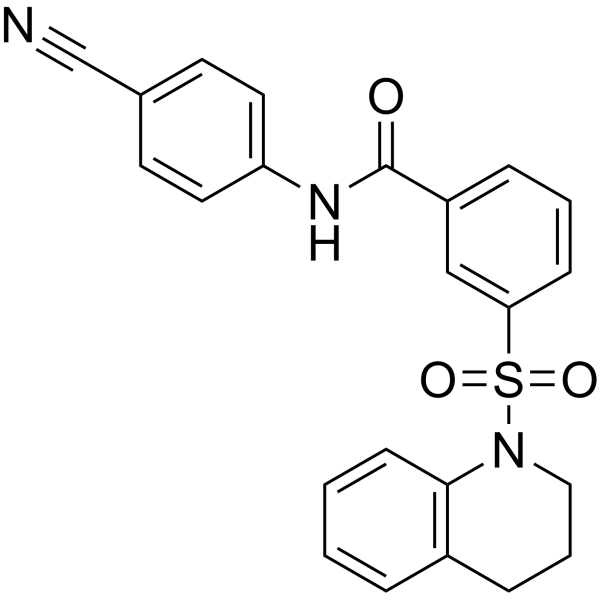
-
- HY-A0068
-
|
Gold thioglucose
|
NF-κB
HIV
Reactive Oxygen Species
|
Infection
Inflammation/Immunology
Cancer
|
|
Aurothioglucose (Gold thioglucose), containing monovalent gold ion, is a potent active-site inhibitor of TrxR1 (thioredoxin reductase 1), with an IC50 of 65 nM. Aurothioglucose inhibits the DNA binding of NF-κB in vitro. Aurothioglucose shows anti-HIV and anti-rheumatic activities .
|
-

| Cat. No. |
Product Name |
Target |
Research Area |
-
- HY-P2284
-
|
|
Peptides
|
Cancer
|
|
AD 01, a 24 amino acid peptide of FKBPL (FK506-binding protein like), possesses potent anti-angiogenic activity. AD 01 bind to the CD44 receptor and inhibit tumour cell migration in a CD44 dependant manner .
|
-
- HY-16375
-
|
D-63153
|
GnRH Receptor
Apoptosis
|
Cancer
|
|
Ozarelix (D-63153) is a GnRH antagonist. Ozarelix induces cell apoptosis and arrests cell in G2/M phase. Ozarelix can be used in the research of prostate cancer .
|
-
- HY-P10376
-
|
|
Peptides
|
Cancer
|
|
Lucicebtide (Compound ST101) is a selective antagonist for CCAAT/enhancer binding protein β (C/EBPβ). Lucicebtide binds to the leucine zipper domain of C/EBPβ, prevents its dimerization, and ubiquitin-dependently degrades C/EBPβ. Lucicebtide arrests cell cycle at G0/G1 phase. Lucicebtide exhibits cytotoxicity in cancer cells. Lucicebtide exhibits good pharmacokinetic characters and inhibits tumor growth in mouse model .
|
| Cat. No. |
Product Name |
Target |
Research Area |
-
- HY-P99183
-
|
EMD 525797; DI17E6
|
Integrin
|
Cancer
|
|
Abituzumab (DI17E6) is a humanised anti-integrin αV monoclonal antibody (IgG2 type). Abituzumab effectively reduces the phosphorylation of FAK, Akt and ERK. Abituzumab can be used in cancer research, particularly in prostate cancer .
|
| Cat. No. |
Product Name |
Category |
Target |
Chemical Structure |
-
- HY-N2415
-
-

-
- HY-N1252
-
-

-
- HY-N8270
-
-

-
- HY-N10778
-
|
|
Triterpenes
Structural Classification
Terpenoids
Source classification
Cucurbitaceae
Plants
Momordica charantia Linn.
|
Others
|
|
(19R,23E)-5b,19-Epoxy19-ethoxycucurbita-6,23-diene-3b,25-diol is a cucurbitane-type triterpenoid. (19R,23E)-5b,19-Epoxy19-ethoxycucurbita-6,23-diene-3b,25-diol has been tested to no effect against 5 cancer cell lines, MCF-7, HepG2, Du145, Colon205 and HL-60 by MTT assay .
|
-

-
- HY-133219
-
-

-
- HY-N10491
-
|
|
Microorganisms
Source classification
Diterpenoids
|
P-glycoprotein
|
|
Spongionellol A is a MDR1 (p-glycoprotein) inhibitor. Spongionellol A has high cytotoxic activity and selectivity in prostate cancer cells by inducing caspase‑dependent apoptosis. Spongionellol A can be used in the research of cancers, such as prostate cancer .
|
-

-
- HY-N10492
-
|
|
Microorganisms
Source classification
Diterpenoids
|
P-glycoprotein
|
|
Spongionellol A analog 1, an analog of Spongionellol A (HY-10491), is a MDR1 (p-glycoprotein) inhibitor. Spongionellol A analog 1 has high cytotoxic activity and selectivity in prostate cancer cells by inducing caspase‑dependent apoptosis. Spongionellol A analog 1 can be used in the research of cancers, such as prostate cancer .
|
-

-
- HY-122943
-
-

-
- HY-B2163
-
-

-
- HY-18981
-
-

-
- HY-N2959
-
-

-
- HY-119833
-
-

Your information is safe with us. * Required Fields.
Inquiry Information
- Product Name:
- Cat. No.:
- Quantity:
- MCE Japan Authorized Agent:


















































